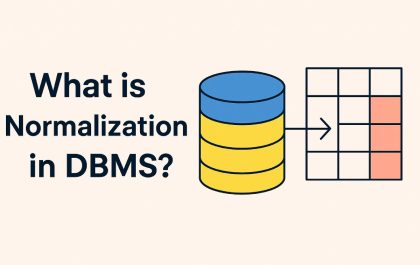Artificial Intelligence for elearning systems, Learning Management Systems (LMS), or EdTech have been around for more than a decade. Students at all levels are increasingly demanding alternative learning solutions, as are their parents.
On the other hand, tutors, schools, and even universities are leveraging technology to meet this growing demand.
The COVID 19 pandemic, coupled with the emergence of new technologies like AI (Artificial Intelligence) and ML (Machine Learning), has forced a paradigm change in the education industry.
These technologies are impacting not only education but almost every industry, field, and domain, including education and eLearning systems.
The request, therefore, is not whether you should adopt these technologies for learning but how these technologies benefit eLearning.
Table of Contents
ToggleWhat are AI and ML?
Before we dive in, a word on what these emerging technologies are and how they work.
Artificial Intelligence for elearning (AI) is a way of assembly machinery and objects intelligent enough to perform tasks that any smart and logical thinking human can achieve. AI spans a range of activities from clicking pictures remotely using a drone to autonomous vehicles.
In its simplest form, AI is the chatbot that you see on almost every website today or Alexa and Siri – the bots you use to command your smart devices. In its most complex form, AI is a complete manufacturing process with zero human intervention.
Machine Learning refers to the ability of machines to learn from experience – just as humans do. ML is a set of procedures that enable an automated system to improve itself.
The change or learning process may supervise, involving human intervention or unsupervised, where the machine automatically detects patterns.
The third type of ML is to reinforce learning which is based on a trial-and-error methodology using reward and punishment to shape behaviour.

Other Emerging Technologies
While AI and ML are at the forefront, there are underlying technologies that help and support them. These include:
Natural Language Processing (NLP) – NLP endeavours to bridge the gap between human diction and programming syntax by teaching computers human language. Variants of NLP include Natural Language Understanding (NLU) and Natural Language Generation (NLG).
Deep Learning (DL) – DL refers to a branch of robotics, which is a cross-section between AI and ML. It is an effort to channel ML in the right direction and empower machines with analytical and decision-making powers.
How Emerging Technologies benefit Artificial Intelligence for eLearning
Here is how the new technologies we’ve mentioned can apply to Artificial Intelligence for elearning :
1. Ease of Access
The first and most obvious benefit of AI is the ease of access. While an undergrad may be willing to key in his assignment, a 10-year-old will prefer to answer questions verbally. AI facilitates this and a whole lot more.
We’ve all heard of audiobooks from Kindle and the Seeing AI from Microsoft. While these technologies are for the visually impaired, the reverse (converting audio to captions and text) can help the hearing impaired. It allows the disabled to explore the world and rub shoulders with their peers.
2. Dissolving Language Borders
Chat boxes are history. Machines are now learning to talk just the way humans do. The day is not far when a machine will take the place of an interpreter – or better yet, teaches humans new languages.
Introduction of bots by DuoLingo is a classic example of leveraging AI for learning a language.
3. Personalization
ML operates on the principle of pattern recognition. Automated learning systems are capable of recognizing areas where learners struggle to understand the content as well as identify skill gaps through assessment modules.
This property of ML, coupled with AI capabilities, can be leveraged to provide personalized content to learners based on their aptitude and learning style.
4. Real-Time Solutions
One major drawback of eLearning, or even traditional learning, is the inability of a student to ask requests and clear his doubts on the fly. It disrupts the learning process and creates learning gaps.
With AI-enabled devices, students can have their queries answered on the go – precisely at the time and place, they need it, deprived of having to make a call, look up a book, or even browse the internet.
Also Read:
5. Multiple Formats
MCQs (Multiple Choice Questions) have become the preferred assessment format because of their ability to adapt to multiple learning capabilities – mainly when using an LMS.
AI and ML take the assessment to a new level, with other assessment formats including a quiz and verbal evaluation. The pattern recognition and learning capability of ML will enable tutors to “teach” machines to create new and unprecedented structures, both for teaching and assessment.
6. Immersive Scenario-based Learning

The ultimate goal of any learning is to reap the benefits of your knowledge. However, as far as school is concerned, there still exists a knowledge gap between theory and practice.
AI-assisted by ML can help bridge this gap by creating immersive learning environments and scenarios.
7. Budget-Friendly
The cost of education has been escalating for the last decade. One main reason for this is that tutors are required to travel to an institute or the student’s place. There is many tangential costs associated education, such as cost travel to school, cost of stationery, uniforms, bags.
AI-enabled eLearning platforms not only allow students to learn in their own time and at their own pace, but they also reduce the tangential cost of learning significantly.
Also Read: Essential considerations for Artificial Intelligence in Mobile Networks: How to feed your AI
8. Exploratory knowledge
One major drawback of traditional learning systems is learning by rote. Knowledge often takes a back seat in favour of grades.
With AI and ML-enabled learning systems, students will be able to explore and gain knowledge rather than learn by rote. This knowledge can then assess using new and innovative methods.
9. Dynamic Grading
With new and innovative ways to acquire knowledge and unprecedented assessment methods will come to a new grading system that will base on individual learner capabilities.
Tutors can factor in learning styles, disabilities, and more into their assessments, eventually grading students based on their skill and learning outcome.
10.Better Mentoring
Remember the day when you were the teacher’s pet? Mentoring is not a new concept, but AI and ML will disrupt this old idea with personalized syllabus, format, assessment, and grading.
It will also level the playing field since every student will receive the same “preferred” treatment.
Also Read: Artificial Intelligence AI: Man vs. Machine
Conclusion
The emerging technologies we have introduced here have enabled businesses, organizations, and industries to connect devices in an unprecedented way automating several business processes that require extensive human labour.
Such connectivity and automation where machines communicate with one another have term Industry 4.0. The versatility of applications has enabled AI and ML to make their way into numerous areas of our lives, from healthcare, marketing, production, and many more.
AI and ML are on the block, and they are the future of every industry, including education. So roll up your covers and gear up – literally.
Shashi Teja
Related posts
Hot Topics
Enhancing School Safety with Intelligent Threat Response Systems
Introduction According to the K-12 School Shooting Database, there were 346 school shootings in the United States in 2023 alone,…
What is Normalization in DBMS: The Complete Guide
What is normalization in DBMS? Look, I’m gonna be straight with you – when I first heard this term, I…



